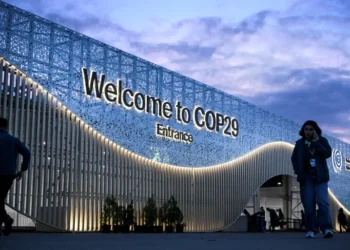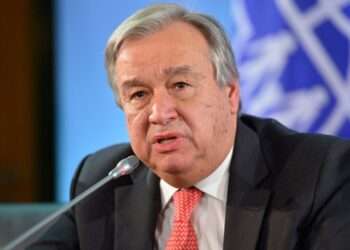Global economic prospects have been severely set back, largely because of Russia’s invasion of Ukraine, forcing the IMF to cut its growth forecast for the year.
In its April 2022 World Economic Outlook, the International Monetary Fund (IMF) projected global growth to slow from an estimated 6.1 percent in 2021 to 3.6 percent in 2022 and 2023. The recent estimates for 2022 and 2023 are both lower than projected in the January outlook. Beyond 2023, global growth is forecast to decline to about 3.3 percent over the medium term.
This year’s growth outlook for the European Union has been revised downward by 1.1 percentage points due to the indirect effects of the war, making it the second largest contributor to the overall downward revision. According to the IMF, this reflects the direct impact of the war on Ukraine and sanctions on Russia, with both countries projected to experience steep contractions.
The crisis unfolds even as the global economy has not yet fully recovered from the pandemic. The IMF underscored that even before the war, inflation in many countries have been rising due to supply-demand imbalances and policy support during the pandemic, prompting a tightening of monetary policy.
The war in Ukraine has triggered a costly humanitarian crisis and at the same time, economic damage from the conflict will contribute to a significant slowdown in global growth in 2022 and add to inflation. Already, the Fund indicated that fuel and food prices have increased rapidly, hitting vulnerable populations in low-income countries hardest.
The Fund stated that the “War-induced commodity price increases and broadening price pressures have led to 2022 inflation projections of 5.7 percent in advanced economies and 8.7 percent in emerging market and developing economies—1.8 and 2.8 percentage points higher than projected last January”.
IMF warned that rising inflation expectations may drift away from central bank inflation targets, prompting a more aggressive tightening response from policymakers. Furthermore, increases in food and fuel prices may also significantly increase the prospect of social unrest in poorer countries.
Amplifying Price Pressures
The war adds to the series of supply shocks that have struck the global economy in recent years. Like seismic waves, its effects will propagate far and wide—through commodity markets, trade, and financial linkages.
Russia is a major supplier of oil, gas, and metals, and together with Ukraine, of wheat and corn. Reduced supplies of these commodities have driven their prices up sharply. Commodity importers in Europe, the Caucasus and Central Asia, the Middle East and North Africa, and sub-Saharan Africa are most affected. But the surge in food and fuel prices will hurt lower-income households globally, including in the Americas and the rest of Asia, according to the IMF.
Eastern Europe and Central Asia have large direct trade and remittance links with Russia and are expected to suffer. The displacement of about 5 million Ukrainian people to neighboring countries, especially Poland, Romania, Moldova and Hungary, adds to economic pressures in the region.
The medium-term outlook is revised downwards for all groups, except commodity exporters who benefit from the surge in energy and food prices. Aggregate output for advanced economies will take longer to recover to its pre-pandemic trend. And the divergence that opened up in 2021 between advanced and emerging market and developing economies is expected to persist, suggesting some permanent scarring from the pandemic.
The Fund highlighted that multilateral efforts to respond to the humanitarian crisis, prevent further economic fragmentation, maintain global liquidity, manage debt distress, tackle climate change, and end the pandemic are essential.
READ ALSO: African Development Bank Board of Directors Approves New Fund for NDC





















